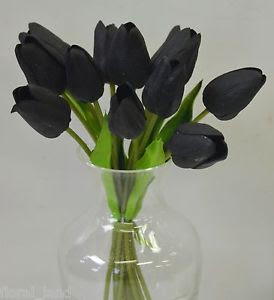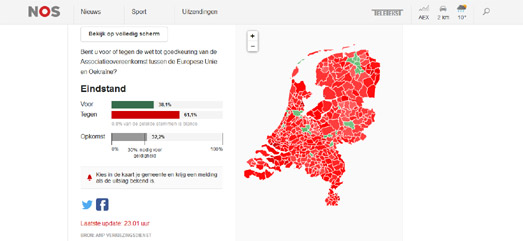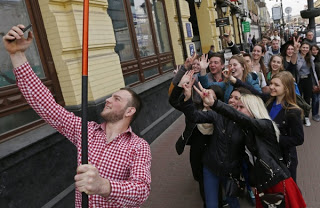Josh Vanhee
Josh Vanhee (via Global Research)
7 April 2016

Josh Vanhee (via Global Research)
7 April 2016

“This referendum handed Ukraine some black tulips: a symbol of farewell, often used to honor someone who has passed away.”
On April 6, 2016 the Netherlands
rejected the EU-Ukraine Association Agreement. By all indications this
was to be a small fringe phenomenon in the wider picture of EU politics.
Yet the surrounding issues make this result – a whopping 61% populate
the Neen-vote – indicative of a lot of strife ahead within the EU and a
rising international disenchantment with the Ukrainian rapprochement movement.
Dutch media had primarily focused on
whether the referendum would achieve enough voter turnout to be legal.
Published polls tended to show only a small lead to the no-camp, and
any notable exceptions to this fable were countered by actual strategies
to make people stay home, and hence invalidate the referendum. To be
fair, this strategy almost worked, yet enough people were motivated
enough to express their frustration and flood the voting booths towards
the evening. The turnout squeezed by the validity requirement of 30% to
32.2%. What was more astounding was the landslide of the No-vote: in
the map below, it shows in red the townships that voted No, and in green
the few that irked out a win for the Yes-vote.
What does this mean? Already, the EU Commission came out with a spokesperson statement that ‘The No-vote will have no influence on the Ukraine treaty‘.
Prime Minister Rutte stated clearly that ‘There cannot be a simple
moving forward with ratification now’. Claude Juncker, EU Commission
president, ‘is sad about the result’. Guy Verhofstadt, ex PM of
Belgium and current leader of the EU Parliament’s liberal faction, ‘is
not surprised about this result; the EU is unable to resolve any of its
current crises’.
The past can teach us how the EU deals
with the pesky referendum problem. Overall, it is treated as a nasty
skin infection. The problem is viewed to be local, is treated locally,
or with some temporary change in diet ,
but surgery is out of the question, and so is any thorough antibiotic
or antiviral cure.
In one case, in fact in the rejection of the EU
constitution by the Netherlands and French referendae in 2005, did the
actual constitution proposal get cancelled and morphed into a smaller,
less ambitious version of itself, the Lissabon treaty. In several other
cases, the particular countries were given opt-out options, or ‘the
ability to not implement’. The Dutch ruling coalition is, for the
moment, quite adamant that they should try to cancel the agreement or
renegotiate the most objectionable parts .
Most likely, Rutte’s efforts will focus on the latter. The most
objectionable part of the agreement to the No-camp was two-fold: the
possible military cooperation and the appearance of the Association
Agreement as a stepping stone towards EU membership.
Ukraine’s leading political class did try to involve themselves in the Dutch referendum, both by Poroshenko’s visit, by TV commercials provided to the yes-camp, by a US grant-funded project of Ukrainian students doing canvassing on public transport in some Dutch cities, by a flash mob outside the Dutch embassy in Kyiv.
Closer to the referendum, as the polls
continued to point in the wrong direction, there was more of a dismissal
of its importance, but as late as the morning of April 6 Ukrainian
media were showing an exit poll strongly favoring the yes-camp: 59% for, 41% against!
It
is telling for the web-savvy Ukrainian media to have found this utterly
irrelevant poll through a Dutch diplomat in Tokyo (presumably, this
poll actually reflected the few Dutch expats in Tokyo that came out to
vote at the embassy).
But what does this actually mean? I would like to point out three main points.
First, this referendum is another deep
line in the sand to the EU. Not because of the referendum itself, but
because of the savvy and organized approach by EU skeptics, using the
internet to harness widely ranging opinions skeptical of various EU
policies into this one direction. While the EU machine cannot be said
to have ignored referendae in the past, overall the machine has rumbled
on with only very small democratically fueled diversions. This line in
the sand co-joins with major cracks in the system: the EU migration
policy, its foreign policy that is carefully wedded to NATO and US
interests and sometimes goes against a growing number of EU member
interests, and the overall growing disillusionment with government in
general that is feeding the right-to-far-right parties in the UK,
France, Belgium, Netherlands and multiple other countries. The EU
migration agreement with Turkey is under heavy fire right now, both from
the left and the right.
Second, the Ukrainian story has failed
at the European box office. The Dutch are famous for their no-nonsense,
straight-as-an-arrow approach and the Ukrainian machinations have
shattered the European Maidan value-fest of 2014. To most Europeans,
Maidan itself now looks as an exception to the rule in Ukraine, a
beautiful firefly but rare in the midst of the corrupt predators that
roam this nation high and low. Poroshenko’s Panama Papers role is
unlikely to have moved the needle much further to the no-camp, but it
likely confirmed the picture that has formed over the last two years:
this country shouldn’t be touched, and shouldn’t be funded. This
referendum handed Ukraine some black tulips: a symbol of farewell, often
used to honor someone who has passed away.
Third, in spite of the anti-Russian
diatribe in pro-Ukraine video clips, in spite of a desperate delusional
try by one of my social media antipodes, Putin really didn’t come and
meddle in this referendum. Russia, Putin, the FSB, or Rasputin cannot
be blamed for this vote – the Ukrainians can search in vain for another
Putin cretin under their bed. The Dutch were perfectly able to make up
their own minds, and the Ukrainian silly PR for the yes-camp always
sounded hollow and out of place, like a Santa story in April. This is
not a pro-Russia vote; but it is a vote to look again at all the
options, without the expensive and unwanted silliness that the Ukraine
story provides.
“Thebig worry for Ukraine is that they have been lumped together with the wider EU issues of migration, loss of sovereignty, democratic alienation, and terrorism inspired by wrong domestic and foreign policy choices: those will continue until a bigger crisis.”
In conclusion, we can expect the Ukraine EU Trade Association
Agreement to be implemented, with some delay of some of its clauses,
some delay to some member states and a few minor adjustments to give the
Dutch a pat on the back. The big worry for Ukraine is that they have
been lumped together with the wider issues of migration, loss of
sovereignty, democratic alienation, and terrorism inspired by wrong
domestic and foreign policy choices: those will continue until a bigger
crisis. At which time the Dutch can now say, “We Told You So.”
Josh Vanhee is
involved in international business and humanitarian work across most of
North-America, Europe and Russia. Canadian and native Belgian, fluent
in Russian, he lived and worked in Belgium, Netherlands, Russia and
Belarus, and writes political commentary on current affairs.
Source: http://joshvanhee.blogspot.ca/2016/04/black-tulips-for-ukraine-2016-dutch.html


Comments
Post a Comment